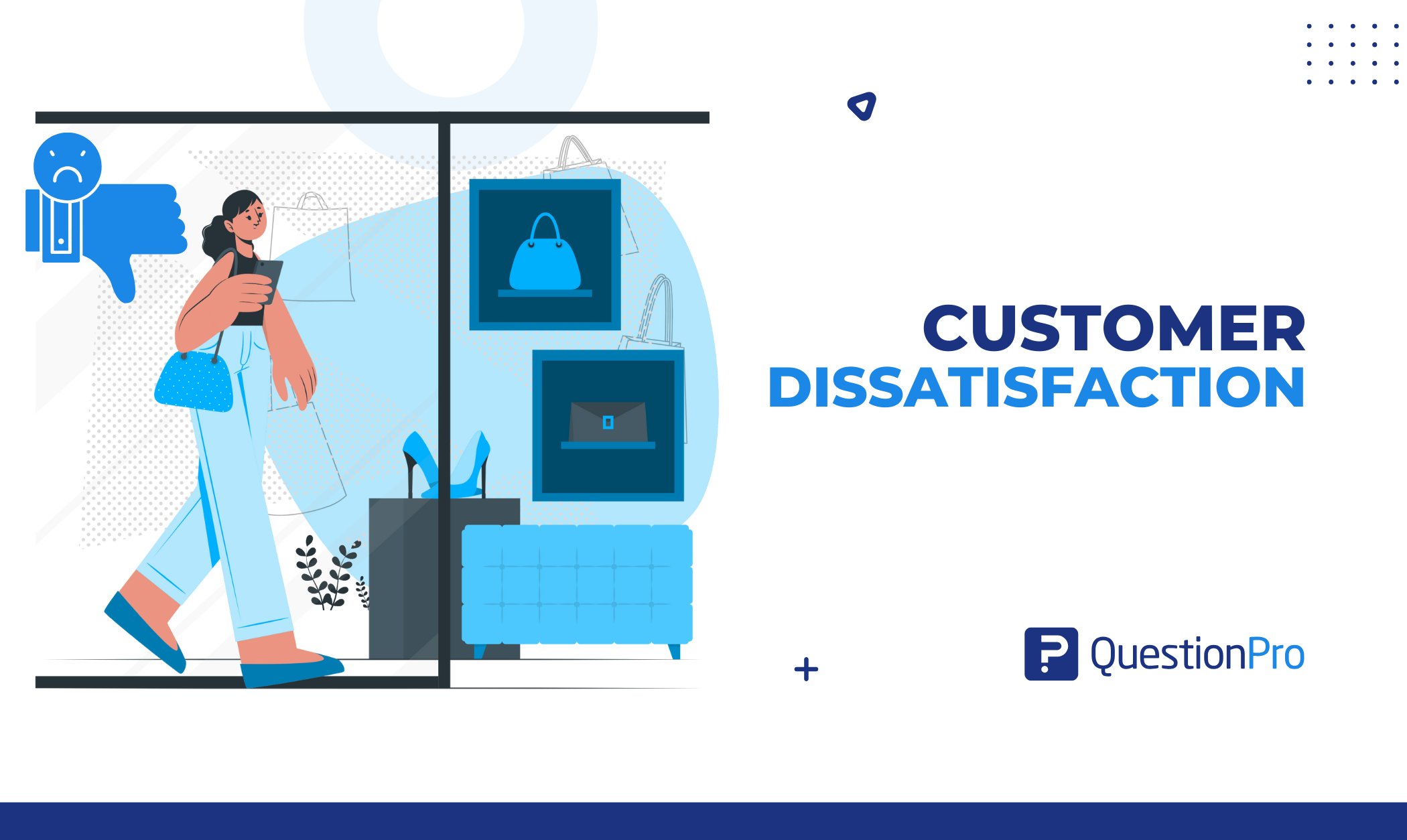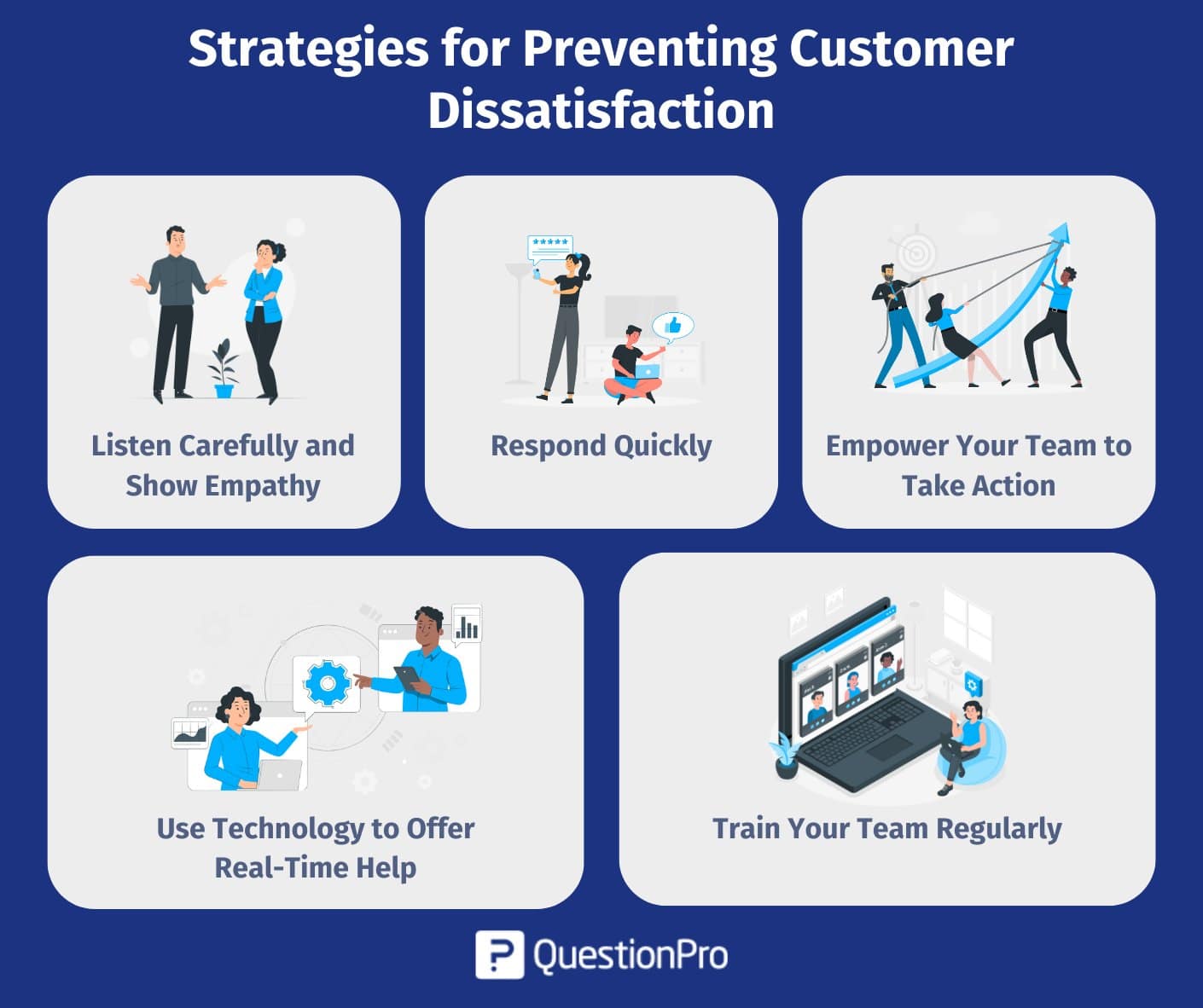
No business is perfect, but what truly matters is how you handle unhappy customers. Even the best brands face complaints, but the smart ones use them as a chance to improve. Customer dissatisfaction isn’t just a bad review; it’s a sign that something needs attention.
Dissatisfaction is unavoidable, but if you don’t handle it the right way, it can slowly chip away at your reputation, sales, and customer trust. The good news? It can be prevented if you know what causes it and how to respond. You can use this dissatisfaction as your greatest strength.
There is a notable quote:
Your most unhappy customers are your greatest source of learning.
Bill Gates
This quote emphasizes that feedback from dissatisfied customers can provide valuable insights for improvement.
In this blog, we’ll talk about the real reasons why customers feel disappointed, what it can cost your business, and, most importantly, how you can fix it before it drives people away. Whether you’re running a small store or a big company, understanding this can help you create better experiences and build long-term customer relationships.
What Is Customer Dissatisfaction?
Customer dissatisfaction is when someone is unhappy or disappointed with a product, service, or experience they received from a business. It happens when customer expectations are not met, maybe the product didn’t work as promised, the service was slow, or they didn’t feel valued.
A recent customer experience trends report reveals that 60% of consumers decide to buy from a brand purely based on the level of service they anticipate. This highlights a critical reality: businesses that overlook the reasons behind customer dissatisfaction risk losing loyal customers and facing a decline in revenue.
It’s the opposite of customer satisfaction, where someone feels good about their experience and wants to come back again. When customers are dissatisfied, they might leave negative reviews, stop buying from that company, or even tell others not to use that business.
For businesses, it’s important to listen to unhappy customers and solve their problems quickly. Doing so can turn a bad experience into a chance to build trust.
What Are the Common Causes of Customer Dissatisfaction?
When customers don’t get the experience they expect, they feel disappointed. This kind of customer dissatisfaction can occur for many reasons. By analyzing customer data, businesses can better understand where things are going wrong and why people are unhappy. Below are some of the most common causes:
- Poor Customer Service and Product
This is probably the biggest reason customers get upset. If the product breaks, doesn’t work as described, or just feels cheap, people will feel like they wasted their money. The same goes for services; if a service is slow, messy, or careless, it instantly leaves a bad impression.
- Poor Customer Support Teams
Have you ever tried contacting support and received no response? Or worse, got a rude one? That’s a quick way to lose trust. When people face a problem, they want a helpful, friendly response. If they don’t get that, the frustration builds up fast.
- Slow Delivery or Long Wait Times
Waiting too long for a delivery, standing in a long line, or being placed on hold for 20 minutes, no one enjoys that. Customers expect fast and smooth service. When that doesn’t happen, it often leads to dissatisfaction.
- Unclear Information
Sometimes, the problem isn’t the product, it’s the lack of information. If return policies, prices, or instructions aren’t clearly explained, customers get confused. Confusion often leads to mistakes and disappointment.
- False Promises
Nothing turns off a customer faster than a broken promise. If you say “free shipping” and then charge for it or advertise “24/7 support” but no customer service representatives reply, customers will feel lied to. And once trust is gone, it’s hard to win back.
Effect of High Rates of Dissatisfaction
When too many customers are unhappy, it creates a big problem for any business. Dissatisfaction may seem like just a few customer complaints at first, but if it keeps happening, the effects can be serious and long-lasting.
Let’s look at what can happen when customer dissatisfaction becomes a regular issue:
- Loss of Repeat Customers: Unhappy customers often don’t come back. Even if they don’t complain, they quietly stop buying from the brand.
- Negative Word-of-mouth: Dissatisfied customers are more likely to share their bad experiences with friends, family, or online reviews, hurting your brand’s image.
- Bad Reputation: When many people have complaints, the brand starts to look untrustworthy or careless in the eyes of the public.
- Decrease in Sales: As loyal customers leave and new ones hesitate to try the product, sales drop. This can directly affect business growth.
- Higher Support Costs: More complaints mean more time spent on fixing issues, processing refunds, and handling upset customers, which increases expenses.
- Low Employee Morale: Staff who constantly deal with angry customers may feel stressed and unmotivated.
5 Strategies for Preventing Customer Dissatisfaction
Managing customer dissatisfaction isn’t just about fixing problems; it’s about understanding them, responding quickly, and making sure they feel valued at every step. Here are five simple but powerful strategies to prevent customer dissatisfaction and boost customer loyalty:

1. Listen Carefully and Show Empathy
Before jumping to a solution, make sure the customer feels heard. A lot of frustration comes from feeling ignored or rushed. Active listening, really paying attention and acknowledging their emotions, makes a big difference.
Apple’s Genius Bar is known for its empathetic customer support. Their staff are trained to listen carefully and respond based on how the customer feels, not just what they say. Whether it’s a broken phone or a tech issue, customers walk away feeling understood and respected.
2. Respond Quickly
Speed matters. Even if you don’t have the full solution yet, letting the customer know you’re working on it helps reduce anxiety. Quick responses show customers that you value their time.
Amazon is a great example of this. If you report a missing or late order, their support team usually replies within minutes through chat or email. In many cases, they issue refunds or replacements without delay. This kind of fast action builds trust and reduces frustration.
3. Empower Your Team to Take Action
Don’t make your employees go through several steps just to help a customer. Give them the tools and authority to make decisions that lead to faster and smoother solutions.
4. Use Technology to Offer Real-Time Help
Live chat, chatbots, and self-service tools can make customer interactions faster and easier. Many people prefer getting help right away rather than calling or emailing.
H&M uses an AI-powered chatbot that helps customers track orders, answer product questions, or handle simple requests. It’s available 24/7, so customers get support anytime they need it, with no waiting required.
5. Train Your Team Regularly
Good service depends on good training. Your team should know how to handle difficult conversations, stay calm under pressure, and solve problems efficiently.
How to Address Customer Dissatisfaction and Reduce it with QuestionPro Survey?
Customer dissatisfaction can seriously affect your business, but with QuestionPro, you can catch it early, understand what’s wrong, and take action fast. Here’s how you can do that using QuestionPro’s powerful tools:
- Ask the Right Questions
QuestionPro lets you create smart surveys using tools like NPS, CSAT, and CES. These help you find out how satisfied your customers are and how likely they are to recommend your business. If scores are low, that’s a clear sign of dissatisfaction.
- Spot Problem Areas Quickly
By implementing customer feedback, you can easily see which parts of your service or product are causing issues. For example, if many customers complain about slow delivery in the survey, you know exactly what needs fixing.
- Take Immediate Action
When someone leaves a negative response, QuestionPro can notify your team right away. You can then follow up with that customer, apologize if needed, and try to solve the problem fast before they leave for good.
- Use Sentiment Analysis for Deeper Insights
If customers write open-ended answers, QuestionPro’s sentiment analysis helps you understand the emotions behind their words, whether they’re angry, disappointed, or confused. This gives you a clearer picture of what they’re really feeling.
- Improve Over Time with Reports
The platform gives you easy-to-read reports and dashboards. You can track trends, compare performance over time, and see if your changes are helping reduce dissatisfaction. This helps you keep improving step by step.
Conclusion
We have learned that customer dissatisfaction can seriously impact your business if not handled properly. It often stems from issues like poor service, unmet expectations, or lack of communication. Identifying these problems early is key, and tools like QuestionPro make that easier by helping you gather customer feedback, spot patterns, and take timely action.
From using real-time surveys to tracking trends over time, QuestionPro gives you the power to understand your customers better and build lasting trust. When you listen, learn, and act, you not only reduce dissatisfaction but also create loyal, happy customers who stick with you.
Frequently Asked Questions (FAQs)
Answer: It can be caused by poor service, product quality issues, lack of communication, unmet expectations, or companies ignoring customer feedback.
Answer: Dissatisfied customers are less likely to return, may leave negative feedback, and can hurt a company’s reputation and revenue in the long run.
Answer: Collecting and analyzing customer feedback, surveys, and support complaints, or reviewing customer data, can help you spot dissatisfaction early.
Answer: Yes, if their issues are addressed quickly and respectfully, and they see real effort from the business, many customers are willing to give a second chance.
Answer: Yes. You can measure it using tools like customer satisfaction (CSAT) surveys, Net Promoter Score (NPS), or by analyzing customer data trends.







